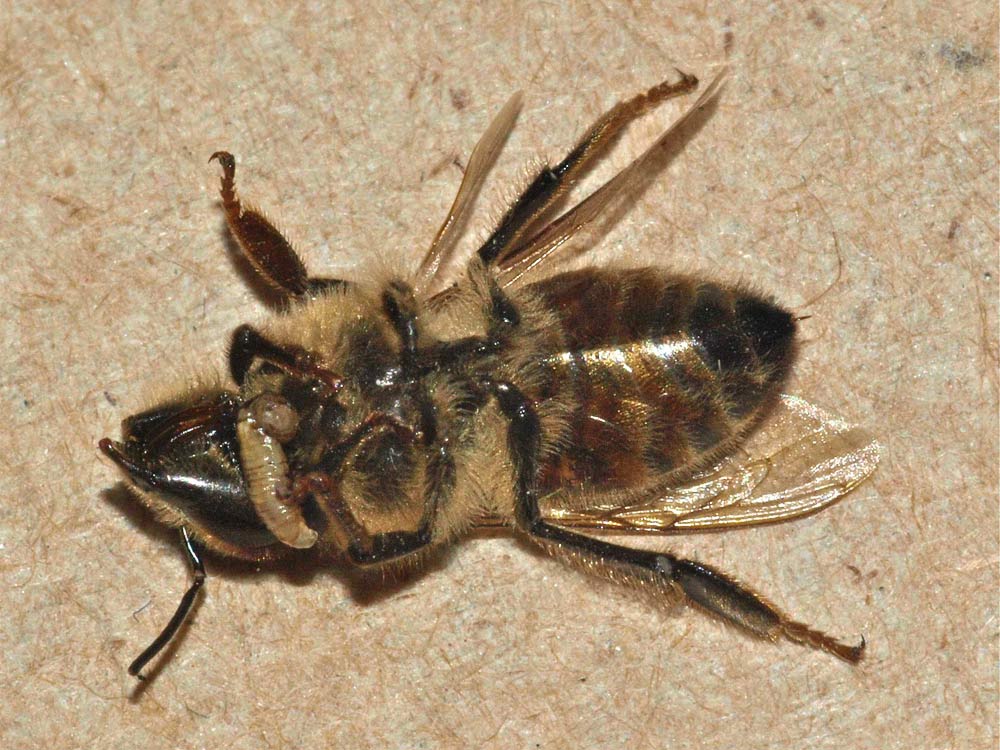'Zombie' Honeybees Spread Along West Coast

Earlier this year, researchers discovered that fly parasites were turning honeybees across the San Francisco Bay area into disoriented, zombie-like wanderers that dropped dead with maggots ready to burst out of their bodies. Other cases were reported in commercial hives in South Dakota and central California. And now the parasite has hit honeybees in Oregon and Washington State, the researchers confirmed.
Scientists first reported the discovery of the Apocephalus borealis infections in January. Several months later, they launched ZomBeeWatch.org, a website that tracks where the "zombie" bees have been documented. The group encourages citizen scientists to send in samples of dead bees they think might be infected with the parasite — a strategy that led to the confirmation of more cases along the West Coast.
"I joke with my kids that the zombie apocalypse is starting at my house," novice beekeeper Mark Hohn told The Seattle Times. Hohn collected dead honeybees on his property in Kent, near Seattle, and sent them to the researchers.
"Curiosity got the better of me," he told the paper.
San Francisco State University biologist John Hafernik, who is part of the ZomBee Watch team, said the new records from Oregon and Washington hint at a bigger problem.
"They show that parasitism of honey bees by Apocephalus borealis is not limited to the San Francisco Bay Area, but probably is widespread along the West Coast," Hafernik told LiveScience in an email. "This raises the specter that A. borealis is contributing to hive loses over a wide area."
Other samples from New York, Ohio and Minnesota are currently being tested. Hafernik said his group is especially interested in receiving more submissions from the eastern United States, the Midwest and Canada to determine the geographic extent of the parasitic fly.
Get the world’s most fascinating discoveries delivered straight to your inbox.
You might be able to spot infected bees by their strange behavior just before death or the presence of maggots after death.
The researchers say a female A. borealis fly injects her eggs into a honeybee's abdomen shortly after making contact with it. About seven days later, after the bee is dead, larvae bust from the area between the bee's head and thorax.
In their January study, the researchers observed that parasitized bees in the wild leave their hives at night and gather near light sources, where they begin to behave strangely. A dying bee without the parasite typically will sit in one place and curl up, but the researchers saw the infected bees pacing around in circles, often appearing off-balance and sometimes unable to stand up before dropping dead.
Some of the scientists are currently performing experiments to learn more about the zombie bees' behavior. The researchers are tagging infected bees with tiny radio trackers and monitoring their movements in and out of a specially designed hive at SF State.
Follow LiveScience on Twitter @livescience. We're also on Facebook & Google+.

